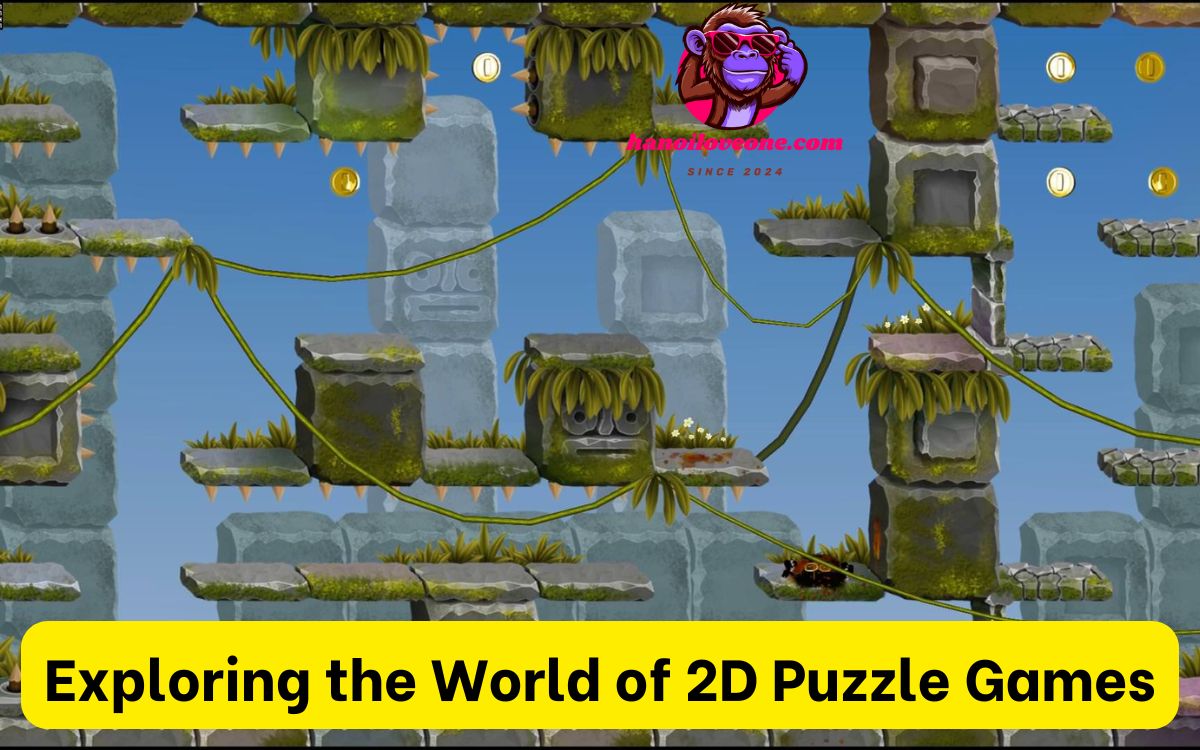Block Puzzle 2048 Game
Published on November 8, 2024

2D puzzle games have a unique charm that continues to captivate gamers of all ages. At hanoiloveone.com, we delve into the magic of these games, exploring their creativity, challenges, and the way they stimulate our problem-solving skills. Whether you are a seasoned player or just beginning your journey into puzzle games, this guide will offer insights into the genre’s appeal and its unforgettable experiences.
The simplicity of 2D puzzle games often masks their depth and ingenuity. Unlike 3D games, they operate on a two-dimensional plane, offering streamlined gameplay that focuses on solving puzzles rather than navigating complex environments. This design not only makes them accessible but also allows developers to craft intricate challenges that engage players’ minds.
The visual style in 2D puzzle games is another standout feature. From pixel art to hand-drawn illustrations, these games use creative designs to set the tone and immerse players in their worlds. Coupled with carefully curated soundtracks, the aesthetic appeal enhances the overall experience.
Additionally, the compact nature of 2D puzzle games makes them ideal for mobile devices and casual gaming sessions. Players can dive into a quick puzzle or immerse themselves in a more extended challenge, offering flexibility that appeals to a broad audience.
2D puzzle games have come a long way since their inception. Early titles like Tetris and Lemmings laid the groundwork, demonstrating how simple mechanics could yield endless hours of entertainment. Over the years, advancements in technology and creativity have led to more sophisticated games with innovative mechanics and captivating storylines.
Modern titles often combine puzzles with other genres, such as platforming or adventure, creating hybrid experiences that appeal to a broader audience. These games push the boundaries of what’s possible within the 2D framework, proving that this classic style remains as relevant as ever.
The genre has also embraced themes ranging from whimsical adventures to serious, thought-provoking narratives. By addressing diverse topics, 2D puzzle games resonate with players on both emotional and intellectual levels, cementing their place in gaming history.
Mechanics are the backbone of any puzzle game, and 2D titles offer a variety of engaging systems:
One of the reasons 2D puzzle games remain popular is their ability to provide a sense of accomplishment. Solving a challenging puzzle offers a rewarding mental workout that’s both fun and satisfying. These games are also versatile, catering to players who want quick sessions as well as those seeking more in-depth experiences.
Additionally, the variety within the genre ensures there’s something for everyone. Whether you prefer lighthearted, casual gameplay or deep, story-driven adventures, the world of 2D puzzle games has you covered.
The accessibility of these games also contributes to their appeal. With minimal hardware requirements and intuitive controls, 2D puzzle games can be enjoyed by players of all skill levels, making them a staple in the gaming community.
Indie game developers have played a significant role in revitalizing the 2D puzzle genre. With limited budgets but boundless creativity, indie studios often experiment with unique mechanics and artistic styles. Titles like Fez and Monument Valley exemplify how innovative ideas can breathe new life into the genre.
The rise of digital distribution platforms, such as Steam and itch.io, has also contributed to the genre’s growth. These platforms allow indie developers to reach a global audience, ensuring that creative 2D puzzle games can thrive.
The community-driven nature of indie development also fosters collaboration and innovation. Developers often share ideas and receive feedback directly from players, resulting in games that resonate deeply with their audience.

Several 2D puzzle games have made a lasting impact on the gaming community:
If you’re new to the genre, here are some tips to enhance your experience:
As technology advances, 2D puzzle games continue to evolve. Innovations in artificial intelligence and procedural generation are creating dynamic puzzles that adapt to player behavior. Meanwhile, cross-platform compatibility ensures that these games can be enjoyed on various devices, from PCs to smartphones.
Developers are also exploring new ways to integrate storytelling into puzzles. By weaving narratives into gameplay, they create richer, more immersive experiences that resonate with players on a deeper level.
The future of 2D puzzle games also includes expanded use of virtual and augmented reality. These technologies open up new possibilities for interaction and engagement, making puzzles feel even more tangible and rewarding.
2D puzzle games hold a timeless appeal, blending creativity, challenge, and accessibility. At hanoiloveone.com, we celebrate the artistry and innovation behind these games, highlighting their role in the gaming landscape. Whether you’re solving intricate puzzles, exploring beautifully crafted worlds, or simply enjoying a moment of mental clarity, the genre offers something truly special for everyone.
As the gaming industry continues to grow, 2D puzzle games remain a cornerstone of innovation and inspiration. Their ability to connect with players on multiple levels ensures that they will be cherished for generations to come.